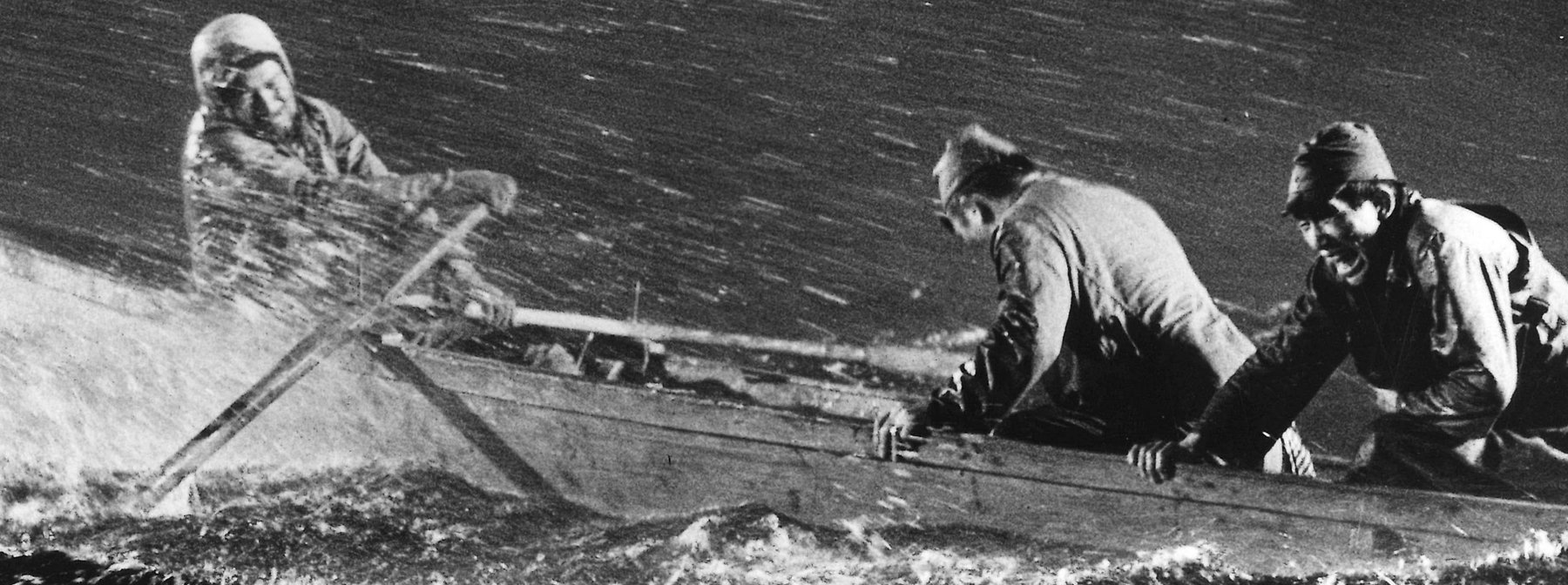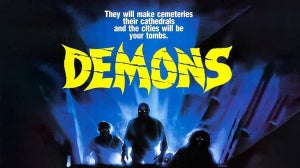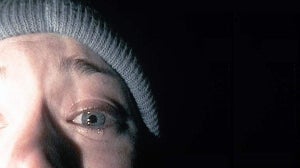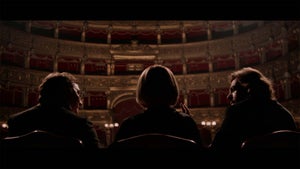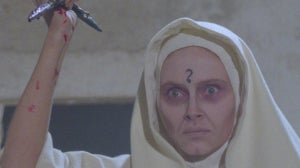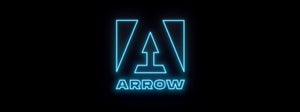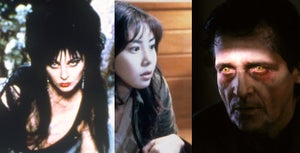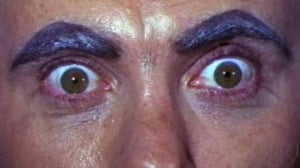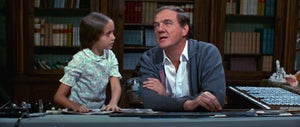
In 1999, Japan’s leading film criticism magazine, Kinema Junpo, created a poll of the Top Japanese Films of the 20th Century based on the opinions of the country’s leading critics and commentators. In the upper ranks of the published list was a series of classics appreciated all across the globe: Akira Kurosawa’s Seven Samurai (1954) took top spot; second place was Mikio Naruse’s Floating Clouds (1955); and ranking fourth was Yasujiro Ozu’s Tokyo Story (1953). But the third-ranked film was a production that, until now, has never received a home media release outside of its native country: Tomu Uchida’s sensational masterwork, A Fugitive From The Past (1965).
It seems absurd that in such a fertile era of Japanese cinema — the post-war years encompassing the ‘golden age’ of the ‘50s and the innovative Japanese New Wave of the late ‘50s and ‘60s — a film of this calibre could remain so elusive to the West. But while classic works by other great Japanese directors of the era, including Kenji Mizoguchi (Ugetsu; Sansho the Bailiff) and Masaki Kobayashi (Harakiri; The Human Condition), have clocked tens of thousands of votes to their names on Western film rating sites like IMDb and Letterboxd, A Fugitive From The Past has managed barely a few hundred.
With this criteria serving as a benchmark for exploration, we’ve marked the long overdue release of A Fugitive From The Past with a selection of great post-war Japanese film works that deserve greater recognition in the West. Check out our list of elusive classics below.
A Fugitive From the Past (Tomu Uchida, 1965)
In the year 1947, a powerful typhoon capsizes a passenger ship on the Tsugaru strait, killing hundreds. Concurrently, an arson and robbery committed by three criminals on land leads to a daring getaway via train and rowing boat. As hundreds of bodies wash up against the shore, police soon discover two dead men baring suspicious wounds, who can’t be identified against the passenger ship’s records. Detective Yumisaka (Junzaburō Ban) becomes obsessed with the case, and spends ten years trying to solve the puzzle. Meanwhile, surviving criminal Inukai (Rentarō Mikuni) escapes into the wilderness, and becomes haunted by the implications of his actions.
A remarkable and gripping drama, A Fugitive of the Past expertly combines the epic narrative storytelling of Japan’s golden era masterworks with a New Wave audio-visual experimentation that pairs distorted footage with Isao Tomita’s musique-concrète-imbued score. The work of cinematographer Hanjirô Nakazawa (who later shot Kinji Fukasaku’s films Street Mobster and Graveyard of Honor), meanwhile, is evocative — with grand shots of violent ocean waves, daunting cliffs and the hellish wilderness juxtaposing against a wealth of uneasy handheld camerawork in close quarters.
https://www.youtube.com/watch?v=OvLqIuvv0Wc
The Rambling Guitarist (Buichi Saito, 1959)
A dusty mountain looms over a vast desert of shrubs as a horse-drawn cart rolls into the foreground. In the back lies a single passenger — a young man with an acoustic guitar, who steps out to wander down a rugged dirt path. This is the titular rambling guitarist, played by scowling heartthrob Akira Kobayashi (later of Fukasaku’s Battles Without Honor and Humanity series) — and soon he’ll be engaging in bloody bar brawls down bustling alleys, being recruited by thugs, and getting himself into all kinds of trouble.
While the majority of this 1959 Nikkatsu thriller is set in the same locale as A Fugitive From The Past — the port city of Hakodate — you’d never expect it after seeing the film’s textbook American western opening shots. Fortunately, the innovative and unexpected genre-bending The Rambling Guitarist works well. Beyond the yakuza shakedowns, dodgy deals, and quickdraw face-offs, though, it is the actors that excel the most — no doubt due to the fact that the film was a product of the studio’s newly-inaugurated star system, which placed memorable actors in a series of wild genre films together.
Kobayashi is radiant as the lead, but Jô Shishido (Branded to Kill) is the real highlight — playing a scar-faced enforcer with a score to settle.
https://www.youtube.com/watch?v=ve8wNBGl4cE
Girls of the Night (Kinuyo Tanaka, 1961)
As an actor, Kinuyo Tanaka was the star of works by some of Japan’s all-time greatest directors — Akira Kurosawa’s Red Beard, Yasujiro Ozu’s Equinox Flower, and Kenji Mizoguchi’s Sansho the Bailiff, included. But lesser-known in the West was Tanaka’s influential work behind the camera.
All six productions helmed by Japan’s second-ever female filmmaker (the first was Tazuko Sakane) have recently been restored, with the BFI and Edinburgh Film Festival screening each of them this summer in the UK. It’s a move that’s brought a whole new wave of appreciation to the otherwise male-dominated golden age of Japanese cinema.
Each of Tanaka’s films explore themes of female agency, desire and independence against vivid and unique backdrops (Forever a Woman follows a terminally ill poetess; Love Under the Crucifix explores forbidden romance in Feudal Japan) — but it is Girls of the Night that is arguably the richest. Set in the aftermath of Japan’s Anti-Prostitution Law, which came into effect in 1957, the film follows an ensemble of former sex workers as they are rehabilitated at a correctional facility before reintegrating into society. It’s a dynamic and brilliantly-shot piece of cinema that deserves the newfound appreciation.
The Black Report (Yasuzô Masumura, 1963)
Yasuzô Masumura studied under Antonioni and Fellini in Italy before returning to Japan in the ‘50s to begin his film career. Despite delivering masterpieces of multiple varieties (corporate satire Giants and Toys; erotic thriller Irezumi; harrowing women-in-war drama Red Angel) — and latterly being described by Shinji Aoyama (Eureka) as the most important filmmaker in postwar Japanese cinema — his reputation has never been as established overseas as it was in Japan. Outside of Arrow’s releases, in fact, a large bulk of his canon has never received Western distribution of any kind.
That’s a huge shame because Masumura’s frequently shocking works have stood the test of time far better than many of his contemporaries — thanks in part to their consistently tight plotting, clinical direction and forward-thinking attitudes to violent imagery.
Masamura would look to the morbid and mysterious works of famed writer Edogawa Ranpo for inspiration on more than one occasion across his career — adapting surreal works like The Black Report and Blind Beast in the ‘60s. The former, a gripping noir mystery that opens with a group of men standing over a bludgeoned body, is as good a place to start as any. Briskly paced — and full of deceitful turns and twists — it develops into a taut courtroom drama, and features memorable turns from Ken Utsui (Seven Samurai) as a prosecutor-awaiting-promotion, and the snakelike Eitarō Ozawa (Ugetsu) as the opposition lawyer.
https://www.youtube.com/watch?v=U5Y292iNn-I
The Invisible Man Appears (Nobuo Adachi, 1949)
“There is no good or evil science,” reads the opening message of Nobuo Adachi’s 1949 film The Invisible Man Appears, displayed in bold monochrome. “But it can be used for evil purposes.”
This is the story of an Einstein-like scientist (complete with moustache and bow tie) who has developed the “Atomina Invisibilitator” at the Nakazato Chemical Laboratory. The agent — which, big surprise, turns people invisible — is deemed unsafe for humans as it causes violent tendencies in animal test subjects. But after a gang of thugs show up at the lab, the agent’s creator goes missing — just as a series of suspicious assaults and incidents shake the community. What happens next, according to the press, is ‘The Mystery of the Century: The Invisible Man Appears!’
Inspired both by HG Wells’ 1897 novel and the Western cinema being imported to Japan during the post-war US occupation, The Invisible Man Appears is a wonderful genre romp that is every bit as entertaining as James Whale’s 1933 Universal adaption. It also happens to be the oldest surviving Japanese science fiction film ever made. Fun POV camerawork that takes the perspective of the unseen troublemaker can be counted among the most enjoyable stylistic decisions — but it’s the brilliant special effects by Eiji Tsuburaya (whose influential work on Godzilla would follow, five years later) that really take the cake.
https://www.youtube.com/watch?v=Ib5m4P1SKwk
Hiroshima (Hideo Sekigawa, 1953)
In 1945, at the climax of World War Two, the United States dropped a “weapon far beyond imagination” over the city of Hiroshima, instantly rendering it “a city of corpses.” Only eight years later, the horrific events that took the lives of approximately 140,000 Japanese civilians (as they are described in Arata Osada’s 1951 book ‘Children of the A Bomb’) had been adapted to cinema twice in the country: first by Kaneto Shindō (Onibaba; Kuroneko) in Children of Hiroshima, 1952, and then by Hideo Sekigawa in Hiroshima, 1953.
The former was entered at the 1953 Cannes Film Festival, and was also successful at home — but it was criticised by the Japan Teachers Union (JTU) for transforming the story “into a tear-jerker, and destroying its political orientation.” They subsequently funded Sekigawa’s adaption, which would be critically acclaimed but only ever released in a limited capacity after the major film studios of Japan determined it to be too “cruel” and “anti-American” for wide exhibition.
Opening in the manner of an educational film, where a classroom full of students (one-third of which suffer from leukaemia, the “A-bomb disease”) learn about the events of the recent past from their teacher, Hiroshima then goes into full re-enactment of the devastating events themselves. With the help of up to 90,000 extras, the chaos and destruction caused by the atomic bomb is recreated in harrowing fashion. Despite an outstanding cast including Isuzu Yamada (Throne of Blood), Eiji Okada (Woman in the Dunes) and Yumeji Tsukioka (Late Spring) — and a crew that included Godzilla score composer Akira Ifukube and cinematographer Yoshio Miyajima (The Human Condition; Kwaidan), the film sunk into obscurity for over 60 years after it was completed.

